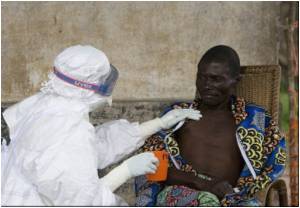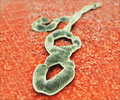US scientists said on Sunday they had cleared a key hurdle in the quest for a drug to treat Ebola, a notorious African virus and feared future weapon of bioterrorism.

After studing the findings, the US Food and Drug Administration (FDA) has given the green light for trials on a small group of human volunteers, they said.
Ebola and Marburg are part of a family of so-called filoviruses, which cause haemorrhagic fever -- a disease with mortality rates of up to 90 percent where, in some cases, the patient bleeds to death.
The drugs are in a class of compound called PMO, for phosphorodiamidate morpholino oligomers. They are designed to hamper the virus' replication in cells, thus buying time for the immune system to mount a response and crush the invader.
The research, appearing online in the journal Nature Medicine, was conducted by the US Army Medical Research Institute of Infectious Diseases in collaboration with a Washington-based biotech firm, AVI BioPharma.
The Pentagon pumped funding into research for a vaccine and treatment for Ebola-type viruses in the wake of the September 9 2001 terror attacks on the United States.
Advertisement
An important step in combatting Ebola was announced in May this year, again using tests on lab monkeys but involving a somewhat different technique to disrupt viral replication.
Advertisement
Despite this progress, a long road lies ahead before any treatment is licensed for humans, experts say.
Testing a prototype drug is a three-phase process that starts with a tiny group of volunteers, where it is initially assessed for safety, and then broadens out to successively bigger groups, where effectiveness becomes a parallel question.
According to the UN's World Health Organisation (WHO), about 1,850 cases of Ebola, with some 1,200 deaths, have occurred since 1976.
The virus has a natural reservoir in several species of African fruit bat. Gorillas and other non-human primates are also susceptible to the disease.
Source-AFP












